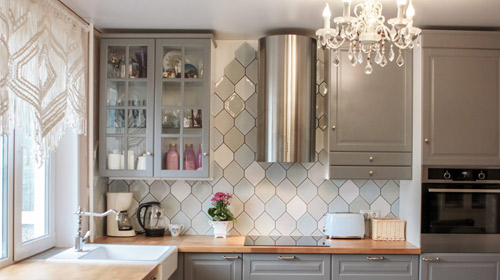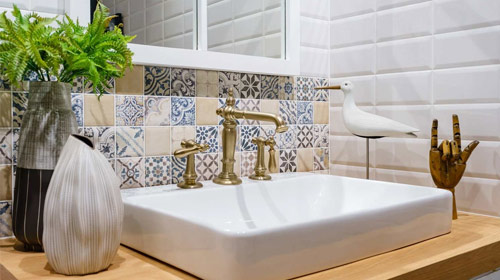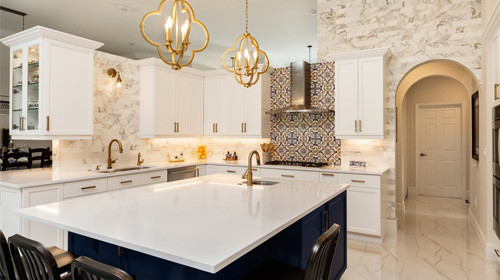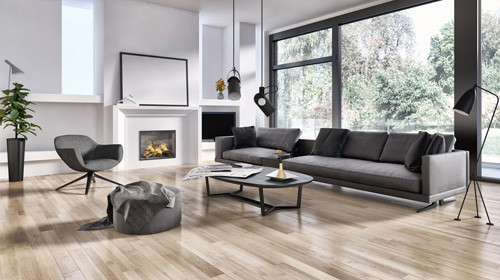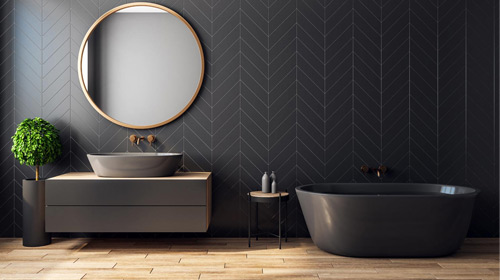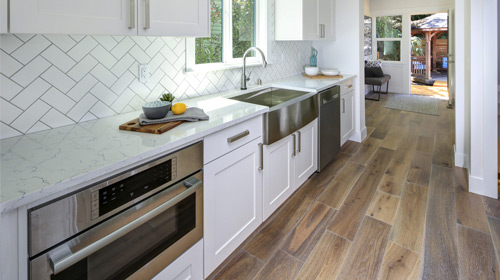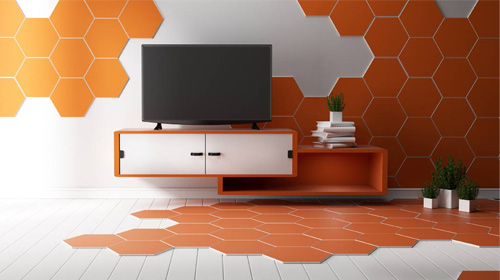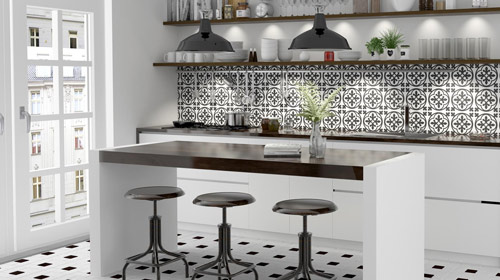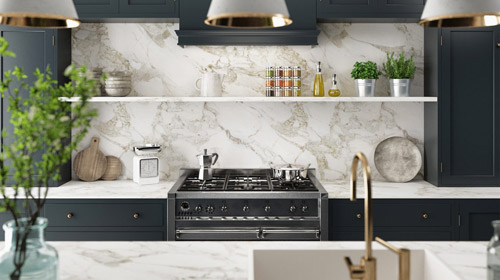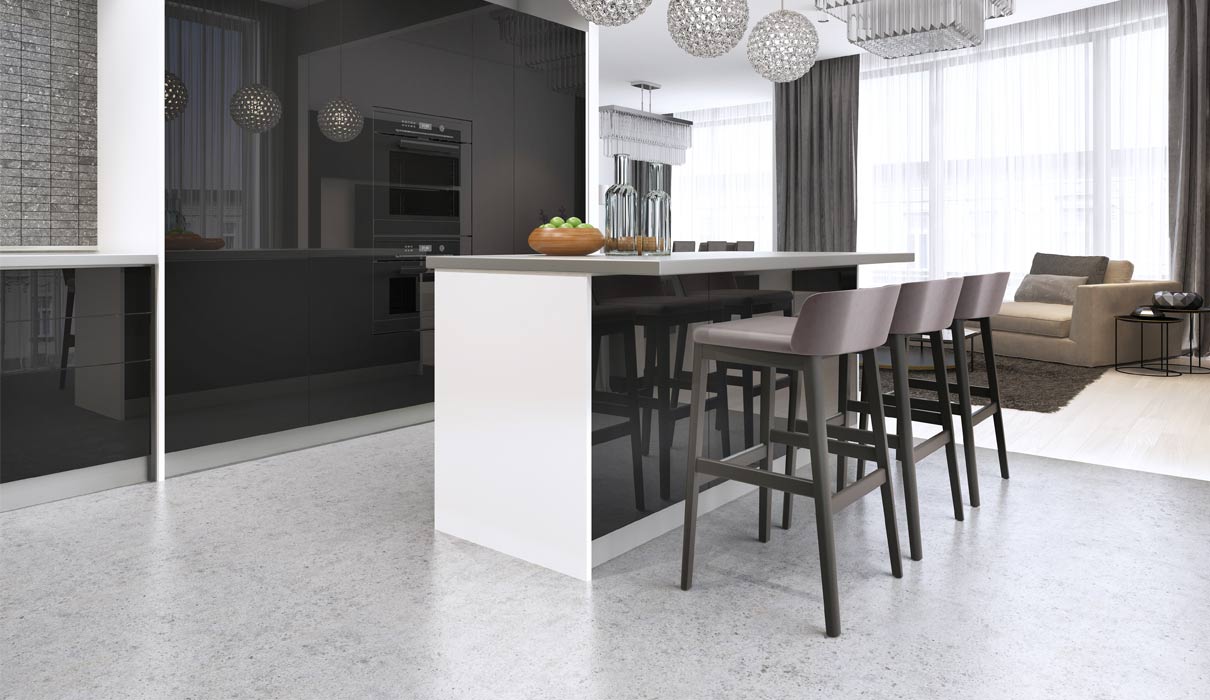
Are you looking for a new kitchen tile flooring? There are many choices and options available today, and it can be challenging to choose the right one for any room. The kitchen floor tile may be the hardest to choose because of the heavy traffic that most kitchens get daily.
There are natural stones with beautiful cuts of limestone, marble, or terracotta, or there are several man-made materials, such as ceramic, concrete, or porcelain. With this article, we intend to provide you information that can help you choose the kitchen floor tiles that will give you years of enjoyment.
The Right Tile Materials for Kitchen Flooring
If you’re looking for unique textures and distinctive tones, natural stone tiles would be a great choice. On the downside, they crack or scratch easily and will need re-sealing periodically. Man-made tiles are less expensive, have a wide selection of designs. On the downside, man-made isn’t going to have the same character as natural stone.
NATURAL STONE
Natural stone tiles will have a honed, polished, smooth sheen when you purchase, or you can choose a matt finish that has pitting and is textured. With the polished natural stone, while water-resistant, it is a slippery surface. Some of the natural stones you may want to consider:
Granite
Granite is a hard stone that comes in many colors. When polished and sealed, it will resist scratching, but it cracks easily. A popular choice in hallways, living rooms, and kitchens.
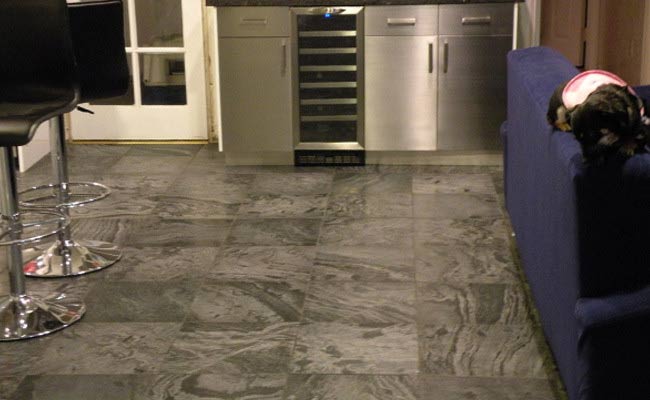
Marble
Marble is a porous stone unless it has been honed and polished that flooring experts recommend for a kitchen due to possible spills. Because of the many colors that it comes in, it is popular in bathrooms and kitchens.
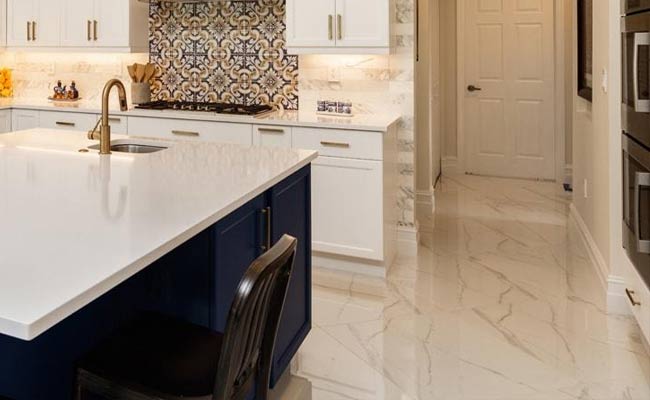
Limestone
Limestone comes in earthy shades and available in polished or textured finishes. It isn’t recommended for a high traffic area like kitchens because it scratches and stains easily.
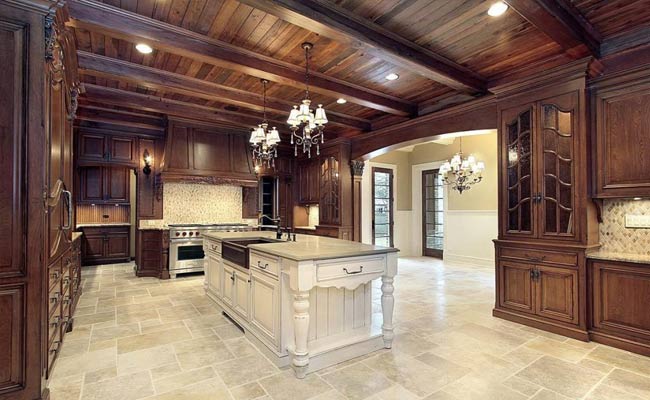
Slate
Slate is a durable stone that comes in dark, earthy shades and is naturally textured but can be honed for a smooth finish if desired, making it an excellent choice for bathrooms, kitchens, and living rooms.
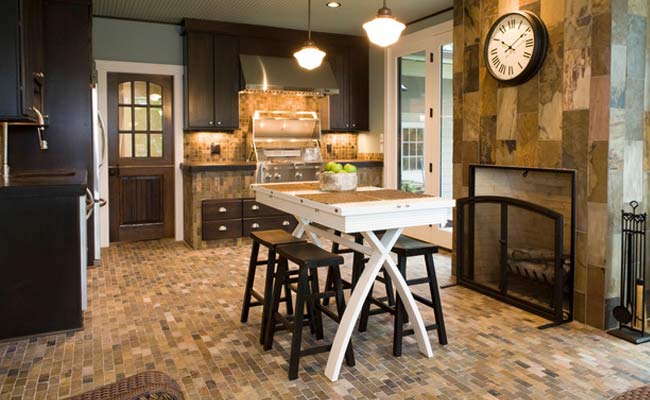
Travertine
Travertine is porous and soft, a naturally pitted surface, but can be honed and polished if desired. It does scratch and stain quickly must be re-sealed regularly. This material is a popular choice for bathrooms, not so popular for kitchens.
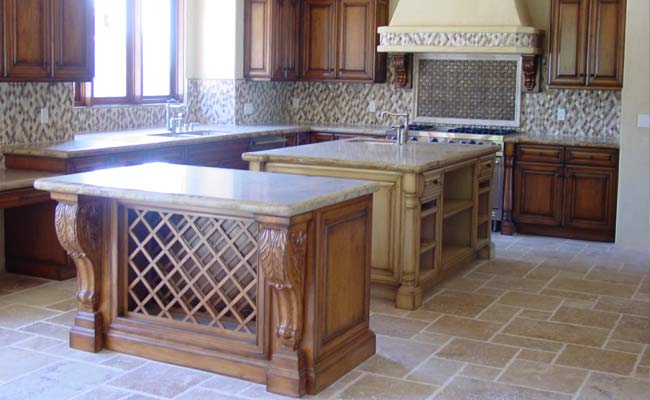
OTHER TILES:
The are many choices in other man-made tiles that are just as beautiful but less expensive than the natural stone tiles. Among those choices are:
Quarry tiles
Quarry tiles are made from clay and hare durable and hardwearing. They come unglazed and must be sealed when installed. The perfect tile for hallways, kitchens, and living spaces, including the outdoors.
Terracotta tiles
Terracotta tiles are made with a mixture of clays that are fired at a lower heat to give it that fashionable rustic look. It comes in earthy colors and must be sealed when installed.
Encaustic tiles
Encaustic tiles are a ceramic tile with a design and available in different colors. Perfect flooring for hallways and will require regular sealing.
Cement tiles
Cement tiles are easily stained if not correctly sealed but is an incredibly durable and hardwearing tile that is perfect for kitchens and contemporary living spaces.
Quartz tiles
Quartz tiles are a composite of quartz, resin, and sand, with color pigment and mirror flecks. They come highly polished and are durable and hardwearing, that’s the reason for Quartz kitchen countertops being most popular.
Choose the Right Dimension for Kitchen Floor Tiles
A few factors will dictate the functionality and the look of your kitchen floor tiles. The type of tile you choose, the dimensions and shapes of the tiles, and the durability of those tiles. We’ve discussed the different types available. Now we’re going to discuss the dimensions of flooring tiles that are available.
The kitchen flooring tile is between a half-inch and one inch thick. When the tile comes from the manufacturer, the tiles are 3” x 3” or 24” x 24”. You can also choose other shapes for your tile, such as hexagons, octagons, or rectangles.
Get to Know about Kitchen Floor Tile Ratings
Flooring tile is rated according to the durability and hardness. Every room in a home has a different amount of foot traffic, such as the bathroom or kitchen will have more foot traffic than a formal living area. The bathroom and kitchen should have a flooring tile that is moisture rated and slip-resistant rated in addition to heavy traffic rated. PEI determines the rating scale between 1 and 5, with 1 being no foot traffic and five being for heavy to extra heavy rated.
Tiles porosity matters
For kitchen flooring tiles, another critical measurement is the porosity. This measurement is concerning the absorption rate of tiles, and because a kitchen is prone to an abundance of water, a low-porosity flooring tile is recommended by flooring experts.
Consider Tiles Color, Finish & Texture
In most homes, an essential and integral room is the kitchen. We cook the meals that we share; we have discussions and laughter in the kitchen. So, the kitchen flooring should contrast and match the décor, making the kitchen warm and welcoming, and that starts with the color of the kitchen tiles.
With all the colors available in natural and man-made tiles, you can choose a color that matches your décor and makes a statement while blending in. For a small kitchen, avoid dark flooring and go with a lighter color that brightens and enlarges the space.
Texture for kitchen flooring is more than just aesthetics, and it is also a matter of safety. A matte finish or textured surface is less slippery compared to glass tiles or tiles that have been honed and polished until sleek and smooth.
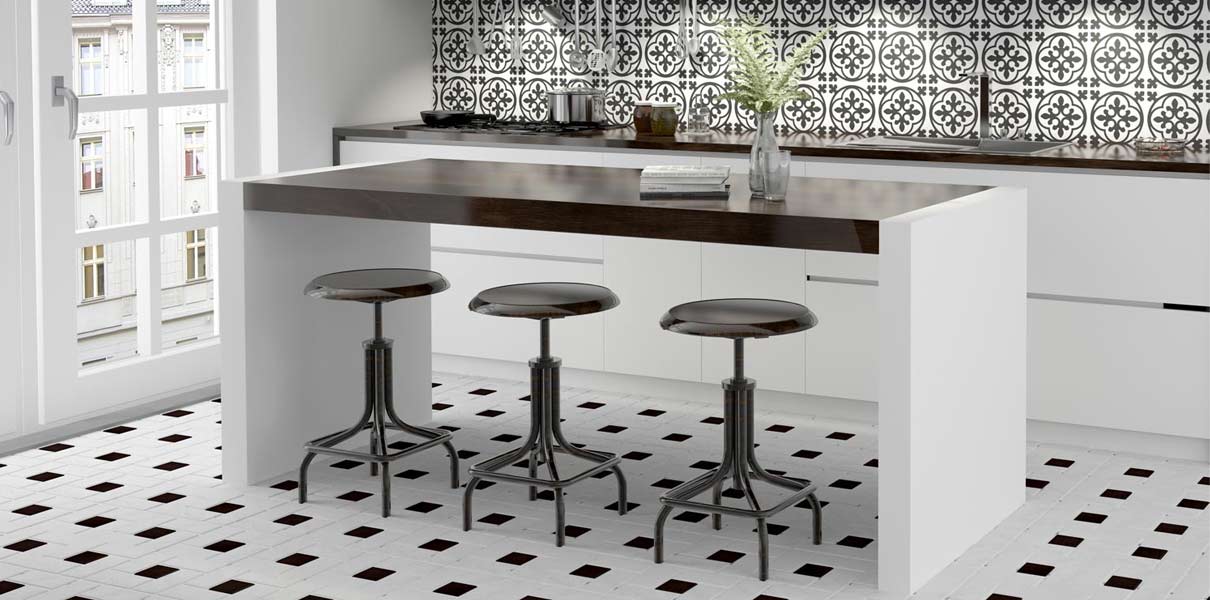
How to Install Kitchen Floor Tiles
Installing kitchen tile can be a first-timer, but with the right equipment and tools, and by following suggestions and tips by manufacturers, you’ll find it is possible. The tools you’ll need include:
- Tile saw
- Wet table saw
- Tile spacers
- A Level
- A trowel
- A grout float
How to Maintain and Clean Kitchen Floor Tile
No homeowner wants kitchen flooring that will require spending weekends cleaning it, and with the flooring options we’ve discussed here, along with proper care and maintenance, that won’t be necessary.
Hardwood flooring is a popular choice today, but if you go with natural hardwood, it scratches easily, and you should expect a high level of maintenance and upkeep, like re-seal it regularly. Laminate is a more durable product, but hard to match existing flooring, which brings us to a wood-look tile. This alternative is made of porcelain with the look of wood that is difficult to install.
Ceramic and porcelain tiles are frequently confused because they are similar in colors and sizes. The difference is sand is added to the clay that porcelain is made from, and then heat and pressure are used that give it the dense and hard material that ceramic doesn’t have. Ceramic tiles are porous and softer then glazed to get the hardness.
Natural stone tiles come from the actual stone of the earth, not manufactured from clay and sand. This material includes flooring like granite, limestone, marble, slate, and travertine. Because these are natural materials, re-sealing is recommended every 2 to 3 years.
Kitchen Floor Tiles Trend 2020
Kitchen floors are exciting when remodeling a kitchen! With the choices in colors, styles, textures, and more, it can be endless and challenging. Let’s review 5 of the most popular options that are trending today:
1 Eco Friendly Floor Tiles
If you’re looking for highly renewable flooring material, we have eco-friendly tile flooring option. However, while it may be a durable flooring material, it is moisture and temperature-sensitive, maybe not the best for a kitchen environment.

2 Wood Look Tile Flooring
A trend that may never go away; this wood-look tile in the kitchen is a hot look of sleek look in the kitchen while still offer dependability and durability.

3 Laminate Floor Tiles
Laminate flooring has improved with the technology available in convincing wood appearance, including distressed and hand-scraped with high color variation. It comes waterproof now, making it kitchen worthy!

4 Engineered Wood Flooring
Engineered wood presents a thin layer of solid wood over man-made materials that include high-density fiberboard or plywood, as well as a rigid core engineered wood flooring that completely waterproof SPC with premium underlayment. With this flooring product, you get style and substance.

5 Waterproof Vinyl Tile Flooring
Also known as WaterProof Core, this flooring has surged in popularity the past few years when it comes to vinyl flooring. Luxury vinyl planks and tiles are 100% waterproof, as well as durable, trendy, and low maintenance.
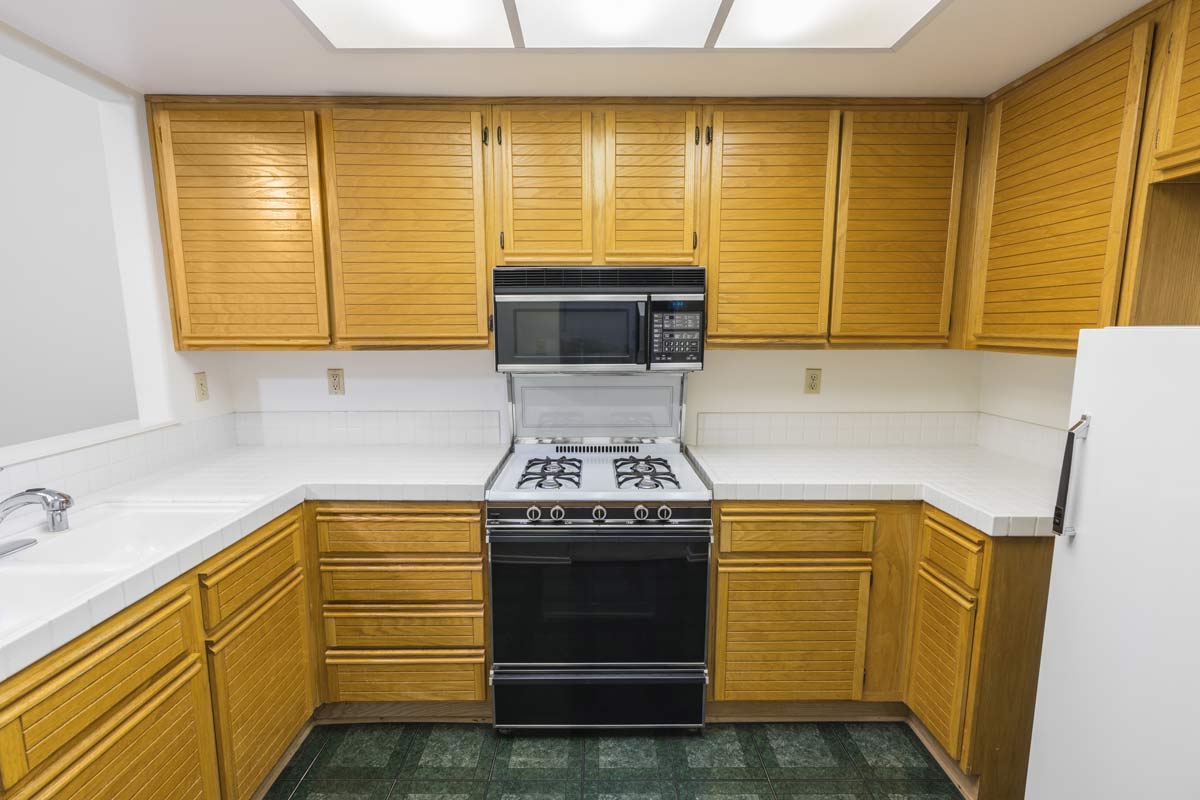
More Resources

